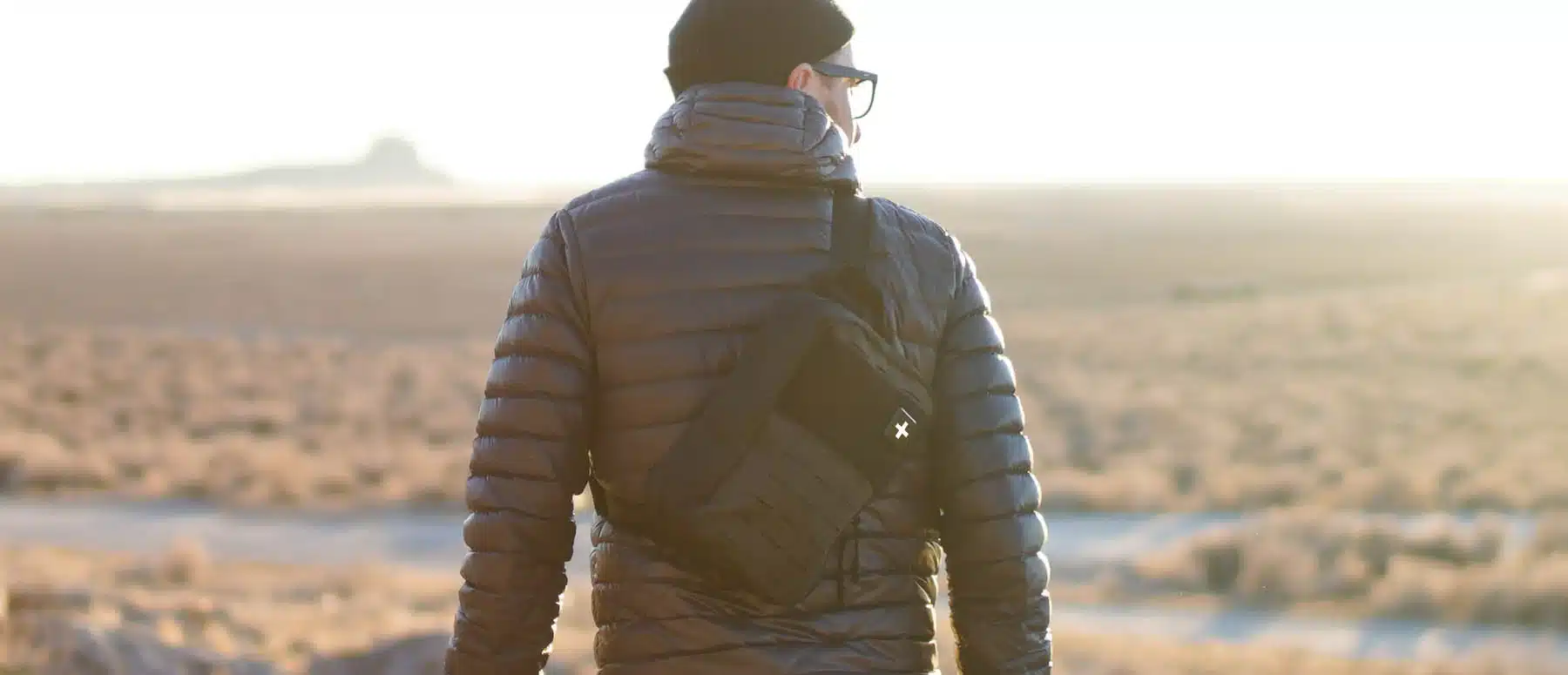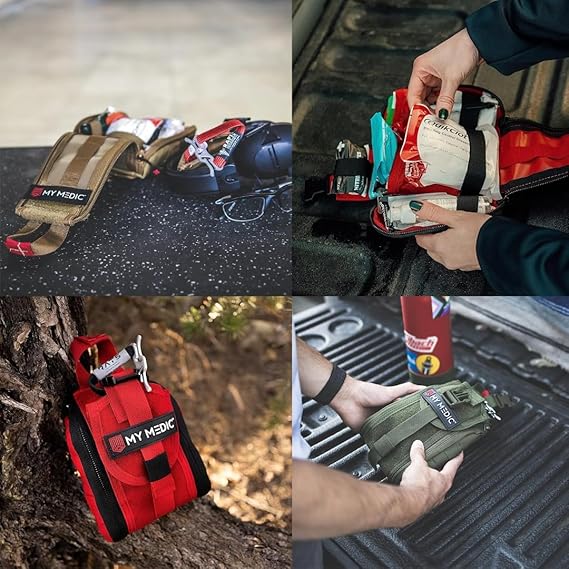
Emergency situations can hit out of nowhere. Whether you’re hiking, working, or just hanging out at home, having a solid first aid kit isn’t just smart—it’s essential.
My Medic has built a reputation for making first aid kits that go beyond the basics. Their kits are well-organized and packed with quality supplies you can actually count on when things get rough.
My Medic first aid kits often include helpful training materials and guides. That means you’re not left guessing what to do in a pinch.
Their lineup covers everything from tiny, portable kits to beefy, comprehensive ones for bigger emergencies. There’s something for every scenario.
My Medic takes a broader view of preparedness. They know that having good gear is only half the battle—you need to know how to use it, too.
Key Differentiators:
Education is a big deal for this brand. Military and medical professionals helped design these kits with practicality in mind. That takes the guesswork out of stressful situations.
With educational materials included, you get clear instructions and visuals for treating injuries—almost like having an expert beside you.
They even make pet-specific first aid kits for animal lovers who adventure with their furry friends. It’s a nice touch that covers the whole family.
The My Medic RECON first aid kit is built for outdoor adventures and emergencies. It’s compact but loaded with over 100 medical essentials, all sorted into easy-to-find categories.
Critical Emergency Components
This kit means business. It’s got tourniquets for major bleeding and chest seals for nasty puncture wounds. In a real emergency, these can be lifesavers.
Wound Management Tools
It covers all the basics for wounds:
Injury Support Systems
Elastic wraps for sprains and instant cold packs for swelling are in there too. Handy, especially if you’re far from help.
Infection Prevention Supplies
Antiseptic wipes and antibiotic ointment help keep infections at bay. Wound closure strips pull skin together for better healing. It’s all about lowering infection risk.
Essential Medical Instruments
Medication Selection
Pain relievers, antihistamines, and anti-inflammatories are usually included, though the exact meds can change between versions.
The RECON kit has upgraded padding and stowable straps for easier carrying. The organized layout really does help you find what you need fast.
It works for hikers, families, campers, and pros who want reliable gear. The size-to-supplies ratio just makes sense for a lot of situations.

TFAK stands for Tactical First Aid Kit—or Trauma First Aid Kit. These are specialty kits built for serious emergencies, not just a scraped knee. Medical and firearm experts design these to handle the worst-case scenarios.
Core Components of TFAK Systems:
| Category | Items | Purpose |
|---|---|---|
| Bleeding Control | Tourniquets, combat gauze, pressure dressings | Stop severe blood loss |
| Chest Injuries | Chest seals | Treat puncture wounds to chest |
| Airway Support | Basic airway tools | Maintain breathing |
| Access Tools | MOLLE attachment, quick-release pouches | Fast deployment |
TFAKs are different from regular first aid kits. They’re built to handle the “big three” killers in trauma: bleeding, airway, and chest wounds. You’ll find over 35 specialized supplies inside—stuff you won’t see in a standard kit.
Speed matters in emergencies, so these kits are designed for quick access. MOLLE attachments let you clip them to tactical gear or backpacks, keeping your hands free but the kit close by.
TFAK kits are surprisingly compact and light, but still ready for serious emergencies. Hunters, outdoor folks, and first responders all find them useful.
They’re built tough, meant to survive rough weather and hard knocks. When it counts, you don’t want your kit to fail.
TFAKs fill the gap between basic first aid and what the pros use, giving regular people a shot at real trauma care.
The My Medic MYFAK Mini is for anyone who wants to stay prepared but hates lugging around extra weight. It squeezes the essentials into a tiny, streamlined package that fits just about anywhere.
Key Applications:
The MyFAK Mini packs over 62 items into its small frame. You get gloves, different bandages, blister treatments, and basic wound care. The kit covers burns, blisters, and hydration needs too.
Design Features:
| Feature | Benefit |
|---|---|
| Folding page layout | Makes it easy to organize and find items fast |
| Compact dimensions | Fits in tight spots |
| Quality materials | Stands up to everyday use |
The MYFAK Mini stays true to My Medic’s focus on practical preparedness but in a smaller package. This portable kit is a real solution for people who want quick access to basics without the bulk.
Picking the right first aid kit? Honestly, it takes a little thought. Your needs are unique, so it’s worth taking a minute to consider what makes sense for your life.
Essential Questions to Ask:
If you’re outdoorsy, you’ll face different risks than someone mostly at home. Hikers need supplies for things like sprains, while families might need more for everyday bumps and bruises.
Group size changes things, too. Bigger groups need more supplies—simple as that. If you’re solo, a smaller kit can do the job.
My Medic kits come in all shapes and sizes. If you’re experienced, you might want a trauma kit. If not, a simple one with clear instructions is probably better.
Taking a little time to think it through means you’ll end up with a kit that actually fits your real-world needs. That’s what matters most, right?
My Medic creates comprehensive emergency solutions that go well beyond your basic medical supplies. The company pairs quality gear with educational resources to build complete readiness systems.
Key Product Options:
Each kit includes guidance materials to teach proper emergency response techniques. You get both the tools and the know-how to handle unexpected situations.
The Prevention First Aid Kit offers essential medical supplies in a portable format for everyday emergencies. The Recon Emergency Medical Kit contains 250 life-saving items with upgraded features for people who want to be really prepared.
A well-equipped MyMedic first aid kit for home use needs a few key categories of supplies. Wound care items are the basics, so you’ll want sterile gauze pads, medical tape, adhesive bandages in different sizes, and antiseptic wipes.
Medications are also important. Include pain relievers like ibuprofen or acetaminophen, antihistamines for allergies, and something for upset stomach or diarrhea. Topical treatments like antibiotic ointment and burn gel are good to have, too.
Tools and equipment make the kit more useful. You’ll want:
The Stay Alive Guide from MyMedic is an educational resource with step-by-step instructions for handling medical emergencies. This digital guide uses visuals and clear protocols for common injuries.
It covers bleeding control techniques like applying pressure and using a tourniquet. There’s also info on airway management and basic life support that anyone can follow, not just medical pros.
Emergency responders and medical professionals helped develop the guide, so it’s up to date with current best practices. Decision trees are included to help you figure out when it’s time to call for professional help.
Outdoor first aid kits need features that address the challenges of being far from help. Portability is huge—lightweight, compact kits are much easier to carry hiking or camping.
Water resistance is also a must. Good outdoor kits have waterproof cases or sealed packaging to keep everything dry.
Extended care capabilities are important if you might be hours from help. Here are some features to look for:
| Feature | Importance | Examples |
|---|---|---|
| Advanced wound care | High | Hemostatic agents, pressure bandages |
| Pain management | Medium | Extended medication supply |
| Communication tools | High | Emergency whistle, signal mirror |
| Shelter materials | Medium | Emergency bivvy, space blanket |
Professional trauma kits are built for serious injuries and include advanced medical supplies. Hemorrhage control is the most critical—look for combat gauze, pressure dressings, and real tourniquets.
Airway management tools help responders keep patients breathing. These might be nasopharyngeal airways, bag valve masks, or chest seal patches for chest injuries.
Advanced wound care means going beyond simple bandages. Professional kits often include:
Travel first aid kits need to balance thoroughness with size limits for packing or flying. Digestive medications are essential—think anti-diarrheal tablets, rehydration salts, and antacids.
Skin protection items matter more when you’re in new climates. Sunscreen, insect repellent, and anti-itch cream can save you a lot of discomfort.
Documentation and communication tools are easy to overlook but really helpful if something goes wrong:
First aid kits need regular attention. If you want your supplies to work when you need them, you can’t just forget about them in a closet.
Medication expiration dates are a big deal—honestly, I’d check them every month if you can. Expired meds might not just be useless; sometimes they’re actually risky.
Supply replacement should happen right after you use anything, even if you just took out a couple of bandages. That way, the kit’s always ready for whatever comes next.
Seasonal reviews help you stay prepared for what’s likely. In summer, you might need more stuff for burns or bites. When it’s cold, frostbite and hypothermia supplies make more sense.
Here’s a loose system you might try:
Environmental factors matter too. If your kit sits in the car or a damp shed, supplies can go bad way faster than you’d expect.